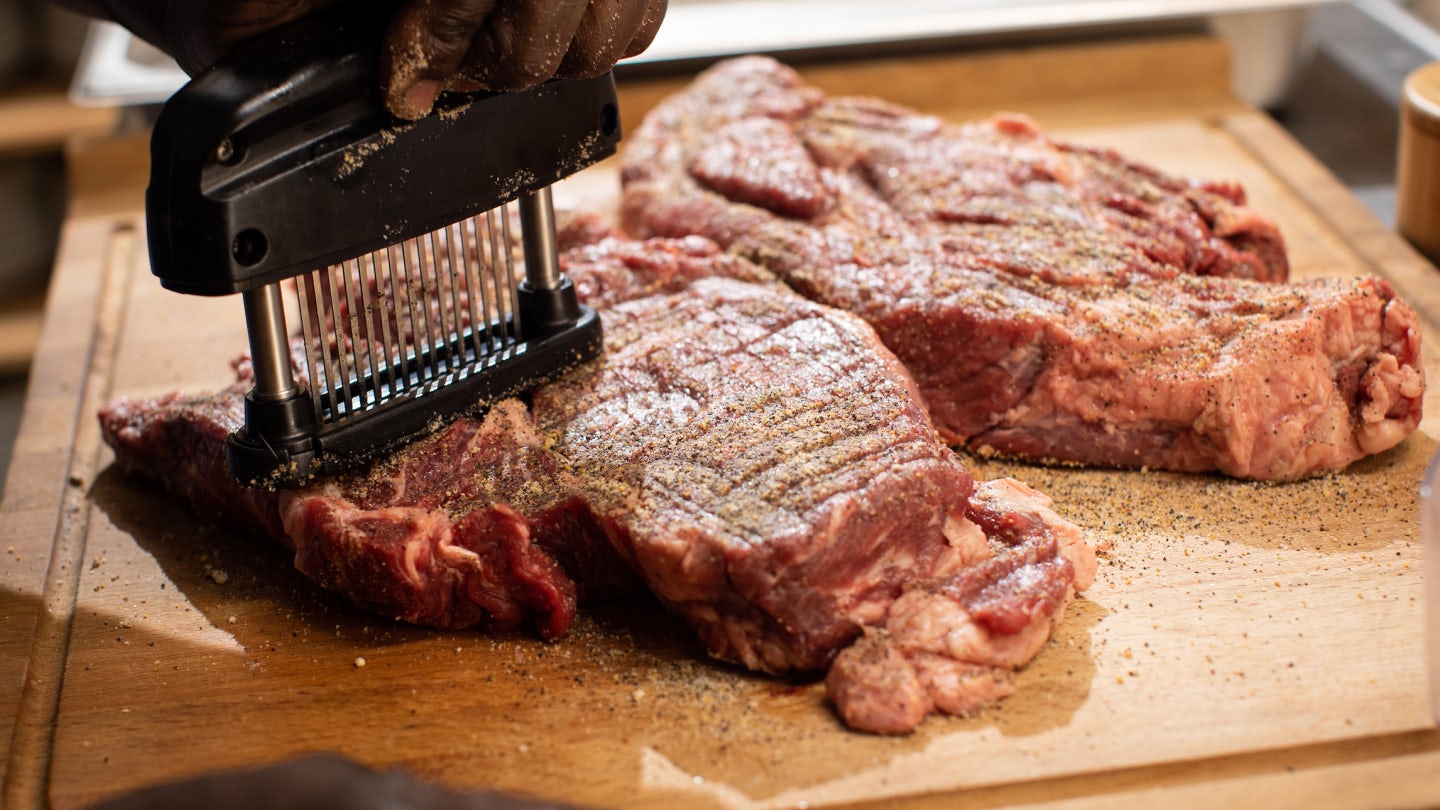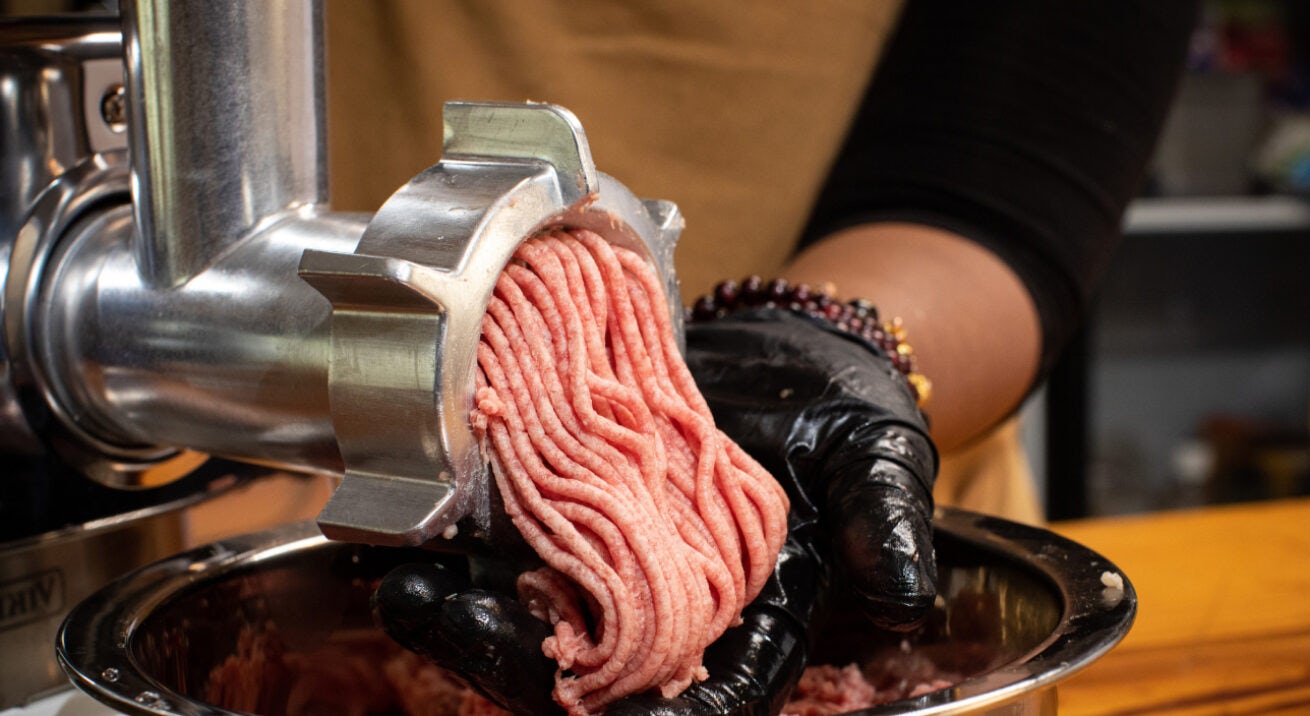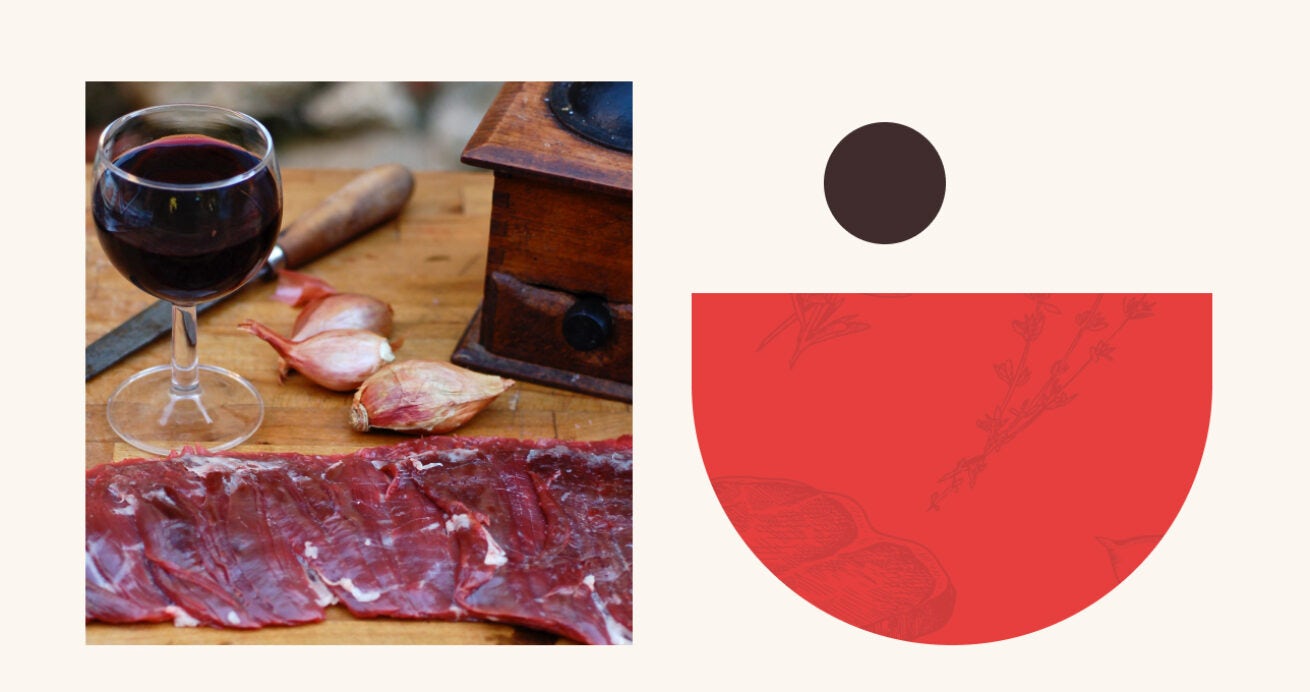Good Meat BreakdownCookingChoosing and Cooking Cuts
Tenderizing Different Cuts

Let's build a Good Meat® movement today.
Donate today!Converting unpalatable meat into unctuous bites is one of the main goals of cooking. Utilizing the appropriate cooking method is one way to achieve these goals, but sometimes we want to apply certain quick-cooking methods (e.g. grilling, pan-frying) to cuts that aren’t typically meant for such methods (e.g. leg steaks, flank steaks). In other instances, we want to convert tougher cuts into small, tender pieces that are more versatile (e.g. ground meats). This is where tenderization comes into play.
Tenderization is an ideal way to create more versatility from a carcass. There are two main approaches to tenderization: mechanical and chemical.

Mechanical tenderization includes grinding, piercing, pounding, and rolling. We grind tougher cuts (as shown above) to convert them to ground meats, enabling them to be cooked quicker, as with burgers or sausages, or utilized in other ways such as chili, pasta sauces, and stir-fry.
The direction that we cut meat is also a method of mechanical tenderization. In almost every instance, cutting across (perpendicular to) the grain of the meat will give the best result. This can be when cutting large cuts of meat into portions or when slicing a cooked cut.

Chemical tenderization involves marinating with either an acidic ingredient like vinegar, wine, or citrus; an alkaline ingredient like baking soda; a bacterial ingredient like yogurt, buttermilk, or other fermented items; or a fruit juice with enzymes like pineapple, kiwi, or papaya.
Thinner cuts (less than an inch thick) with a large muscle grain are ideal for chemical tenderization. A marinade cannot penetrate more than a quarter-inch of meat, so consider their use to be more about surface flavoring and less about dramatic structural changes overall. Piercing or pounding the surface of the meat can increase penetration, slightly. Be wary of letting your meat sit in marination for too long, as it can over-tenderize the meat resulting in a mushy, wet-cardboard type of surface texture.
Information to help you get started
Popular Links

Let's do some good!
Sign up for our newsletter. We’ll keep you informed and inspired with monthly updates.